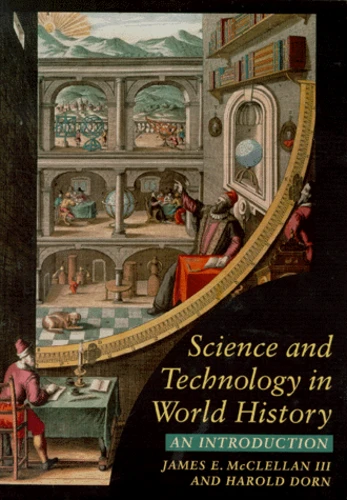Science And Technology In World History. An Introduction
Par : ,Formats :
- Paiement en ligne :
- Livraison à domicile ou en point Mondial Relay indisponible
- Retrait Click and Collect en magasin gratuit
- Nombre de pages404
- PrésentationBroché
- Poids0.865 kg
- Dimensions17,6 cm × 25,1 cm × 2,7 cm
- ISBN0-8018-5869-0
- EAN9780801858697
- Date de parution01/01/1999
- ÉditeurJohns Hopkins
Résumé
In modern industrial society, the tic between science and technology seems clear, even inevitable. But historically, as James E. McClellan III and Harold Dorn remind us, the connection was far less apparent. For much of human history, technology depended more on the innovation of skilled artisans than it did on the speculation of scientists. Technology as "applied science," the authors argue, emerged relatively recently, as industry and governments began funding scientific research that would lead directly to new or improved technologies. In Science and Technology in World History, McClellan and Dorn offer an introduction to this changing relationship.
McClellan and Dorn review the historical record beginning with the thinking and tool making of prehistoric humans. Neolithic people, for example, developed metallurgy of a sort, using naturally occurring raw copper, and kept systematic records of the moon's phases. Neolithic craftsmen possessed practical knowledge of the behavior of clay, fire, and other elements of their environment, but though they may have had explanations for the phenomena of their crafts, they toiled without any systematic science of materials or the self-conscious application of theory to practice.
Without neglecting important figures of Western science such as Newton and Einstein, the authors demonstrate the great achievements of non-Western cultures. They remind us that scientific traditions took root in China, India, and Central and South America, as well as in a series of Near Eastern empires, during late antiquity and the Middle Ages, including the vast region that formed the Islamic conquest. From this comparative perspective, the authors explore the emergence of Europe as a scientific and technological power. Continuing their narrative through the Manhattan Project, NASA, and modern medical research, the authors weave the converging histories of science and technology into an integrated, perceptive, and highly readable narrative.
"Professors McClellan and Dorn have written a survey that does not present the historical development of science simply as a Western phenomenon but as the result of wide-ranging human curiosity about nature and attempts to harness its powers in order to serve human needs. This is an impressive amount of material to organize in a single textbook."
- Paula Findlen, Stanford University
In modern industrial society, the tic between science and technology seems clear, even inevitable. But historically, as James E. McClellan III and Harold Dorn remind us, the connection was far less apparent. For much of human history, technology depended more on the innovation of skilled artisans than it did on the speculation of scientists. Technology as "applied science," the authors argue, emerged relatively recently, as industry and governments began funding scientific research that would lead directly to new or improved technologies. In Science and Technology in World History, McClellan and Dorn offer an introduction to this changing relationship.
McClellan and Dorn review the historical record beginning with the thinking and tool making of prehistoric humans. Neolithic people, for example, developed metallurgy of a sort, using naturally occurring raw copper, and kept systematic records of the moon's phases. Neolithic craftsmen possessed practical knowledge of the behavior of clay, fire, and other elements of their environment, but though they may have had explanations for the phenomena of their crafts, they toiled without any systematic science of materials or the self-conscious application of theory to practice.
Without neglecting important figures of Western science such as Newton and Einstein, the authors demonstrate the great achievements of non-Western cultures. They remind us that scientific traditions took root in China, India, and Central and South America, as well as in a series of Near Eastern empires, during late antiquity and the Middle Ages, including the vast region that formed the Islamic conquest. From this comparative perspective, the authors explore the emergence of Europe as a scientific and technological power. Continuing their narrative through the Manhattan Project, NASA, and modern medical research, the authors weave the converging histories of science and technology into an integrated, perceptive, and highly readable narrative.
"Professors McClellan and Dorn have written a survey that does not present the historical development of science simply as a Western phenomenon but as the result of wide-ranging human curiosity about nature and attempts to harness its powers in order to serve human needs. This is an impressive amount of material to organize in a single textbook."
- Paula Findlen, Stanford University

